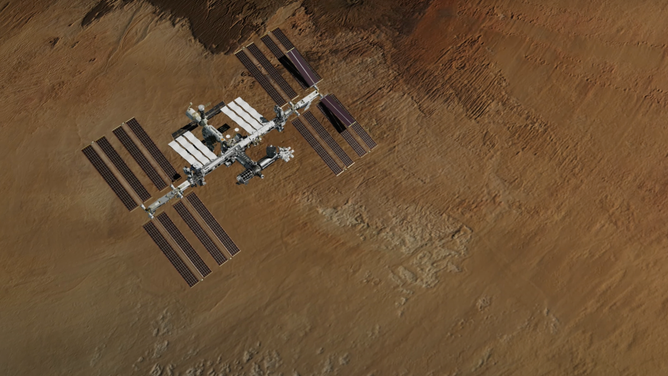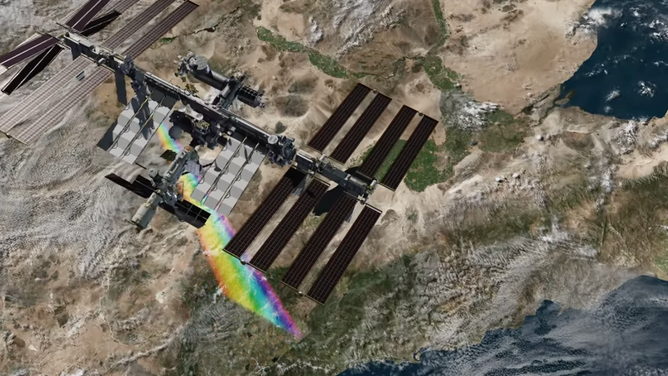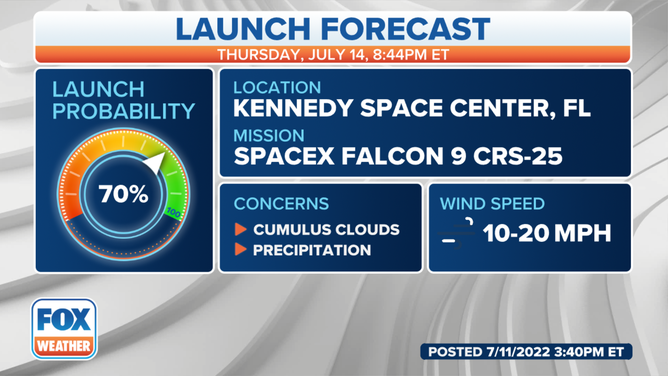How does mineral dust impact Earth's climate? NASA works to close knowledge gap
SpaceX launching EMIT, more research to the space station on July 14
Dust storm in Morocco
A person running from a surface dust storm in M´Hamid, Morocco in September 2019. NASA's EMIT instrument will measure the Earth’s arid regions to enable new modeling and understanding of the Earth’s mineral dust cycle.
KENNEDY SPACE CENTER, Fla. – Desertification is no longer limited to desert-like regions of Earth and is expected to become more pervasive in the future, which is why NASA scientists want to answer essential questions about mineral dust emissions and its role in cooling and heating the planet.
Mineral dust from the Salton Sea region of California or dust storms in Morocco, for example, can impact agriculture, the air we breathe and the climate, but the extent of those effects is not fully understood.
To close a critical knowledge gap around the impacts of mineral dust, NASA's Jet Propulsion Laboratory is sending an Earth-observing instrument to the International Space Station called EMIT, which stands for Earth Surface Dust Mineral Investigation.
"These minerals get launched into the atmosphere where they can heat or cool the planet. They can form clouds. And there's a host of other interactions they have with our system," EMIT Principal Investigator Robert Green said.
5 THINGS TO KNOW ABOUT THE SAHARAN DUST PLUME
Currently, what scientists know about mineral dust is based on about 5,000 samples taken and analyzed. EMIT will provide a billion direct observations of the mineral composition of Earth's arid regions.
"We're going to close a gap in knowledge about those mineral resource regions of our planet," Green said.
Dust storms can have enormous implications. A 2020 storm from Africa sent dust over to Florida and Texas, creating visibility hazards. The Saharan Dust storms can also create poor air quality, according to NASA Chief Scientist and Senior Climate Advisor Kate Calvin.
"Dust does affect air quality when you think about like if you're in like a sandy or desert region and there are all of these particles circulating around you, and you breathe that in," Calvin said.
WHERE DO OUR TOP AIR POLLUTANTS COME FROM?
The instrument is packed into a metal-looking box about the size of a dishwasher-sized. EMIT is currently loaded into the Cargo Dragon trunk, ready to launch from Kennedy Space Center in Florida on Thursday night.
SpaceX is scheduled to launch its 25th cargo resupply mission for NASA to the ISS at 8:44 p.m. ET. The Cargo Dragon spacecraft will carry more than 5,800 pounds of supplies and science to the orbiting laboratory.
Climate in many colors
Hidden under the hard metal exterior shell is an instrument becoming more popular among planetary scientists: an imaging spectrometer. While EMIT will look at Earth specifically once it's installed outside the International Space Station, spectrometers have been used to study other worlds, including to find water-formed minerals on Mars.
For the first time, the NASA technology will be used to learn the composition of mineral dust and map the geology of the regions that form dust, helping scientists understand the dust cycle and how it impacts climate change.

An animation of the International Space Station over the Bodele Depression in Chad, one of the regions where EMIT will measure the composition of mineral dust. (Image credit: NASA/JPL-Caltech)
"We know that it scatters some solar radiation back out into space. So it has some effect on the net energy balance of the planet and whether it warms or cools the planet. But we really don't know what that effect is," explains EMIT instrument scientist David Thompson, with NASA’s Jet Propulsion Laboratory.
Thompson explains an imaging spectrometer is a little like a camera, but while your typical camera only captures three wavelengths -- red, green and blue -- EMIT will see much more.
"Emit has hundreds of different wavelengths. So, in addition to acquiring data in the visible range, we can make color photos out of the EMIT images if we want," Thompson said. "Every pixel has hundreds of colors that go throughout the near-infrared and the shortwave infrared far beyond what our eyes can see."
WHEEZING AND SNIFFLING? IT COULD BE SAHARAN DUST
These mixtures of wavelengths form thousands of colors, allowing scientists to understand the chemical composition of things without ever directly touching them.
Calvin said understanding the dust color over time is vital to predicting future climate impacts.

Artist conceptualization of EMIT's imaging spectrometer collecting data above Southern California.
(NASA/JPL-Caltech)
"Dust, depending on its color, either absorbs or reflects sunlight. Darker colors absorb, (and) lighter colors reflect, and that affects local temperature," Calvin said. "But we don't really have a good sense of exactly what that dust color looks like, particularly over some of the dry regions that are producing a lot of dust because we don't have observations."
After the Cargo Dragon docks at the ISS, the supplies and experiments will be unloaded and EMIT will wait about a week before the space station's Canadarm plucks it out of the Dragon trunk and places it on the other side of the ISS.
CLICK HERE TO GET THE FOX WEATHER UPDATE PODCAST
By the end of July, the EMIT team could be receiving data from the instrument. It's expected to take Earth observations for about a year and a half.
To continue this research, NASA plans to launch a surface biology and geology mission in 2027 or 2028, part of its Earth System Observatory satellite constellation.
"EMITs a harbinger of a new, really exciting technology to come. We're developing these new techniques to look at our planet in new ways and see things we couldn't see before," Thompson said. "Emit is just sort of the first vanguard in that next generation of missions."

SpaceX CRS-25 launch forecast for July 14
(FOX Weather)
